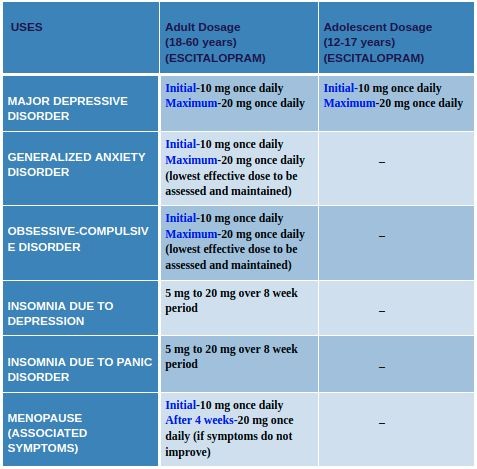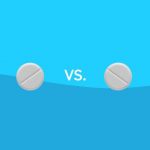
Contents
Lexapro (escitalopram) vs. Buspar (buspirone)
Buspar (buspirone) is an anti-anxiety drug used to treat anxiety and may improve depression symptoms in patients with generalized anxiety disorder.
- The brand name Buspar is discontinued in the U.S. Generic versions may be available.
- It works by stimulating serotonin type 1A receptors on nerves, altering the chemical messages they receive. It also has minor effects on dopamine receptors.
- Unlike benzodiazepine medications, Buspar does not cause sedation.
What are the side effects of Lexapro and Buspar?
Lexapro side effects
Common side effects of Lexapro include:
- agitation or restlessness,
- blurred vision,
- diarrhea,
- difficulty sleeping,
- drowsiness,
- dry mouth,
- fever,
- frequent urination,
- headache,
- indigestion,
- nausea,
- increased or decreased appetite,
- increased sweating,
- sexual difficulties,
- taste alterations,
- tremor, and
- weight changes.
Antidepressants increased the risk of suicidal thinking and behavior in short-term studies in children and adolescents with depression and other psychiatric disorders. Anyone considering the use of Lexapro or any other antidepressant in a child or adolescent must balance this risk with the clinical need.
Short-term studies did not show an increase in the risk of suicidality with antidepressants compared with placebo in adults beyond 24 years of age. There was a reduction in risk of suicidality with antidepressants compared with placebo in adults 65 years of age and older. Depression and certain other psychiatric disorders are themselves associated with increases in the risk of suicide. Patients who are started on therapy with antidepressants should be closely observed for clinical worsening, suicidality, or unusual changes in behavior.
Other side effects include influenza-like symptoms and pain in the neck or shoulders.
Although changes in sexual desire, sexual performance, and sexual satisfaction often occur as a result of depression itself, they also may be a consequence of the drugs used to treat depression. About one in 11 men given Lexapro report difficulties ejaculating.
Possible serious side effects of Lexapro include:
- Serotonin syndrome
- Suicidal thinking and behavior
- Abnormal bleeding
- Seizures
- Manic episodes
- Confusion
- High fever
- Slurred speech
- Muscle rigidity
- Low sodium
- Angle closure glaucoma.
WARNING
Some patients experience withdrawal reactions upon stopping SSRI therapy. Symptoms may include
- dizziness,
- tingling,
- tiredness,
- vivid dreams,
- irritability, or
- poor mood.
In order to avoid these symptoms, the dose of SSRI can be slowly reduced instead of abruptly stopped.
Buspar side effects
The most common side effects of buspirone are:
- dizziness,
- nausea,
- headache,
- nervousness,
- lightheadedness,
- excitement, and
- insomnia.
Other important but less frequent side effects include:
- unsteady gait,
- diarrhea,
- excitement,
- weakness,
- hostility,
- skin rash,
- tremors.
What Is the dosage for Lexapro vs. Buspar?
Lexapro side effects
- The usual starting dose of Lexapro for treating depression is 10 mg once daily in the morning or evening. The dose may be increased to 20 mg once daily after 3 weeks.
- Benefit may not be seen until treatment has been given for up to 4 weeks. A daily dose of 20 mg may not be more effective than 10 mg daily for treatment of depression.
- The dose for treating generalized anxiety disorder is 10 mg once daily.
- Lexapro can be taken with or without food.
Buspar side effects
- The usual starting adult dose is 10-15 mg daily given in 2 or 3 doses.
- The dose may be increased by 5 mg every 2 to 4 days until an effective dose is found.
- The maximum adult dose is 60 mg daily, but most patients respond to 15-30 mg daily.
- Buspirone can be taken with or without food but preferably on a consistent basis.
QUESTION
What drugs interact with Lexapro and Buspar?
Lexapro drug interactions
- Lexapro should not be combined with MAO inhibitors or drugs that increase serotonin in the brain.
- Selective serotonin inhibitors may increase the risk of gastrointestinal bleeding in patients taking certain drugs.
Buspar drug interactions
- Buspar should not be used with MAO inhibitors or drugs that increase serotonin in the brain.
- Use of buspirone during breastfeeding is not recommended.
Are Lexapro and Buspar safe to use while pregnant or breastfeeding?
Lexapro
- Lexapro should not be used during pregnancy unless the expected benefits outweigh the unknown hazards to the fetus.
- Lexapro should not be given to nursing mothers unless the expected benefits outweigh the possible hazards to the child.
Buspar
- There are no adequate studies of buspirone in pregnant women.
- Buspirone should not be used by women who are nursing infants.
Summary
Lexapro (escitalopram) and Buspar (buspirone) are used to treat generalized anxiety disorder. Lexapro is also used to treat depression. Buspar may also be used to improve depression symptoms in patients with generalized anxiety disorder. Lexapro is a selective serotonin reuptake inhibitor (SSRI) antidepressant and Buspar is an anti-anxiety drug. Side effects of Lexapro and Buspar that are similar include headache, nausea, difficulty sleeping, diarrhea, and tremors.


